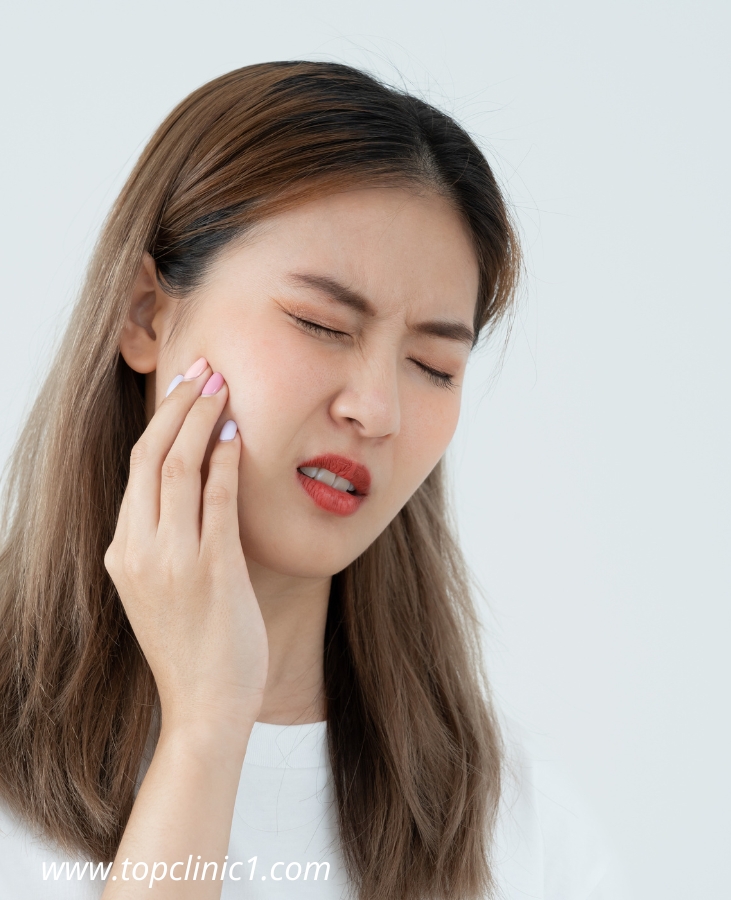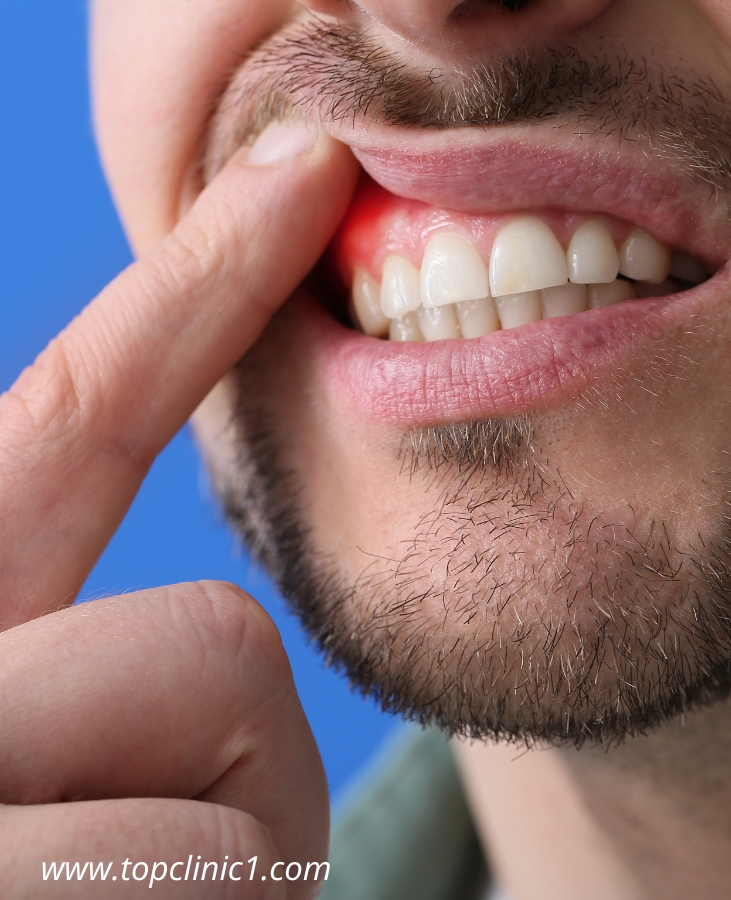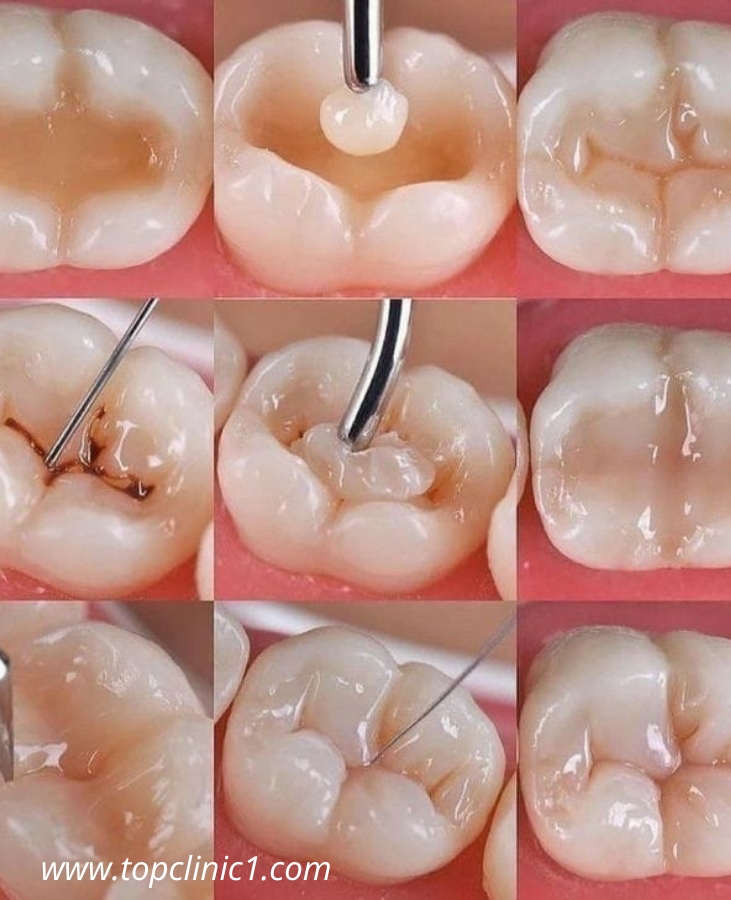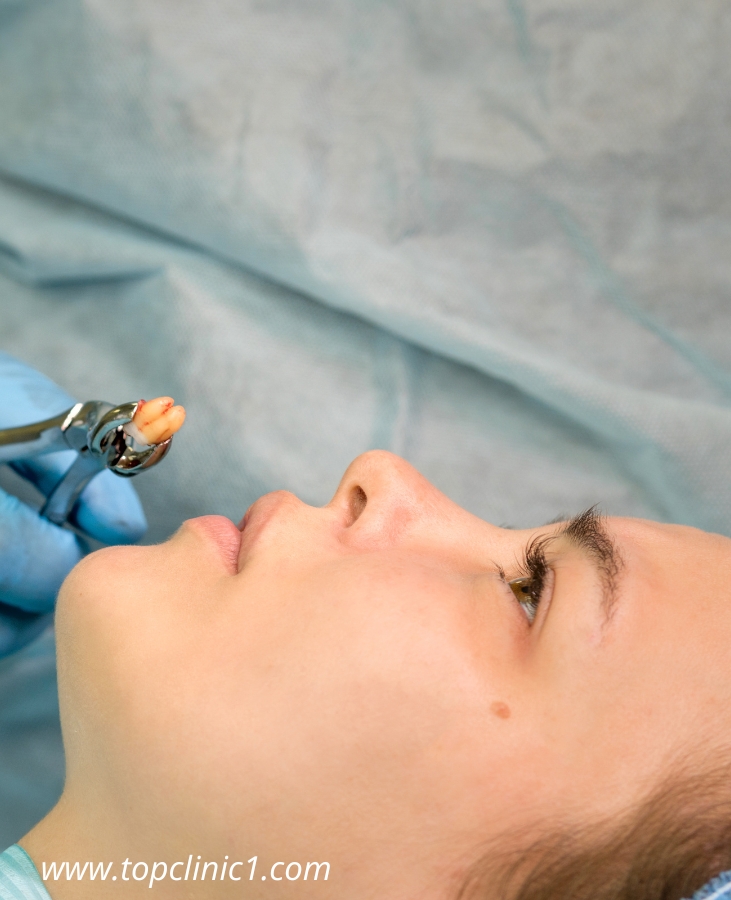عيادة لوسيل لطب وتجميل الأسنان
Reasons for pulling the dental nerve?

Lack of cleaning or caring for teeth causes tooth decay and caries.
Ignoring existing cavities, which leads to their increasing size and reaching the tooth nerve.
Some injuries and fractures that reach the pulp of the tooth.
Inflammation of the gums may extend to the roots of the teeth, causing inflammation of the dental nerve.
Pointing out that inflammation of the dental nerve may be reversible or irreversible, which means that the pain resulting from tooth decay and inflammation of the dental nerve may be reversible or irreversible, as in the beginnings of tooth decay and decay, there is a feeling of pain when there are external influences such as Eating cold or hot food or eating sweets.
Once you stop taking these effects, the toothache disappears.
In the event of irreversible neuritis, there is pain when there are external stimuli, especially when eating hot food. The pain may continue even after stopping eating these foods for a long period and may not go away with painkillers.
The pain may be sudden without any trigger and may occur even during sleep and does not respond to painkillers. In this case, the tooth nerve must be pulled to relieve pressure inside the tooth and clean it of bacteria.
However, in the case of reversible neuritis, the pain is moderate and goes away with the removal of the trigger, which is sweets and cold drinks. In this case, there is no need to pull the tooth’s nerve, but only to clean the decay and caries and make a filling for the tooth.
Dr. adds: Ahmed Musaedah said that neglecting the nerve of the tooth may lead to the occurrence of rot in the nerve inside the pulp chamber, the occurrence of an abscess, or even swelling in the tissue surrounding the tooth, which causes swelling in the cheek, face, and areas surrounding the tooth.
Ways to prevent dental nerve infection
Make sure to brush your teeth daily, especially before bed.
Reducing the intake of sugars, especially at successive periods during the day, with the necessity of brushing the teeth after eating sugars.
Visit the doctor periodically to ensure the health and safety of the teeth and surrounding tissues.
Gingivitis is usually caused by the accumulation of a layer of sticky deposits or bacteria on the teeth

It is a non-destructive type of gum disease, but if left untreated, gingivitis can develop into periodontitis, which is more serious and can eventually lead to dryness around the teeth and tooth loss.
Signs of gingivitis include redness and swelling that can bleed easily. In mild cases of gingivitis, patients may not even know they have it, because the symptoms are mild and can be easily treated with good oral cleaning.
The causes that lead to gingivitis include:
The main cause of gingivitis is gingivitis
In the accumulation of food debris and bacteria on the surface of the teeth and in the spaces between the teeth, which leads to the formation of tartar at the gingival line of the teeth, causing swelling and inflammation of the gums.
Hormonal changes that occur during pregnancy, adolescence and menopause.
The random growth of teeth makes it difficult to clean them and thus gingivitis occurs.
Lack of attention to oral and dental hygiene makes the gums more susceptible to sensitivity and inflammation.
Bacterial invasion of oral bacteria, which accelerates the development of gingival swelling.
Taking some types of medications, such as: anti-seizure medications and angina medications.
Lack of saliva in the mouth, which increases the risk of gingivitis
Who are the people most at risk of developing gingivitis?
Gingivitis can occur in any group of people, but its incidence increases in the following cases:
1.Pregnancy.
2.Smoking.
3. Diabetes.
4. Teeth Crowding.
5. Immunodeficiency diseases such as: AIDS, or what is known as acquired immunodeficiency disease (in English: AIDS).
6. Tumors and cancerous diseases.
7. Getting older.
8. Malnutrition and vitamin C deficiency.
9. Hereditary or genetic factors.
10. Family history.
Cosmetic fillings are the easiest, most biocompatible and least invasive way to repair decayed or broken teeth

Restoring health and function while maintaining a highly aesthetic appearance.
It is divided into two types: permanent and temporary cosmetic fillings
Cosmetic fillings are:-
Tooth-colored fillings, made up of glassy minerals and hard plastic, are used by dentists to treat deep cavities, cover cavities, and even repair severely damaged teeth.
These fillings are promising as they can be used as a less invasive alternative to traditional crowns and silver fillings, which require more extensive tooth preparation, and can also be used to make aesthetic improvements to the teeth.
Dental fillings cannot completely replace tooth loss, but are used to replace tooth structure destroyed by tooth decay.
Brushing your teeth twice daily and eating a varied, nutrient-rich diet will help reduce tooth loss and the need for fillings.
Dental checkups will help ensure that any conditions are detected and treated as quickly as possible.
Cosmetic fillings
A filling is a tooth-colored coating that a dentist places on the facial surfaces of teeth to correct irregular tooth alignment, enamel erosion, discoloration or spacing, and chips or cracks.
Treatment of cosmetic fillings for the front teeth.
The process of installing cosmetic fillings can be completed in one day.
The color of the fillings is chosen first. Next, a dental adhesive film can be added so that the filling can be installed successfully.
A special light is then used to harden the surfaces.
The final step is to form the facades correctly. You will instantly love your new, radiant smile after the procedure.
How to clean:
Compared to natural teeth, cosmetic fillings do not require any special care. Brush your teeth at least twice a day, as often as you can get for real. To keep your teeth clean, use dental floss, pins, or interdental brushes.
Benefits of cosmetic fillings:
⁃ Unlike ceramic fixtures, they are relatively inexpensive.
⁃ During one visit
Tooth extraction aims to completely remove the affected tooth

This is in cases where all layers of the tooth are affected by decay, or when there is a need to extract a prominent or hidden wisdom tooth to prevent affecting neighboring teeth. The tooth extraction is performed in a simple manual way using pliers, or surgically by making an incision in the gum.
Actions that must be taken after tooth extraction
1. You must abstain from eating and drinking for two hours after the operation until the effect of the anesthetic ends. You must also refrain from consuming any hot drinks for at least one day after tooth extraction.
2. Pain usually appears in the operation area, especially on the first day of treatment. Painkillers can be used as needed, and local swelling may appear for several days.
3. You must go to the doctor immediately if some symptoms appear, such as: high temperature, severe pain, bleeding, and local discharge from the mouth.
WhatsApp us